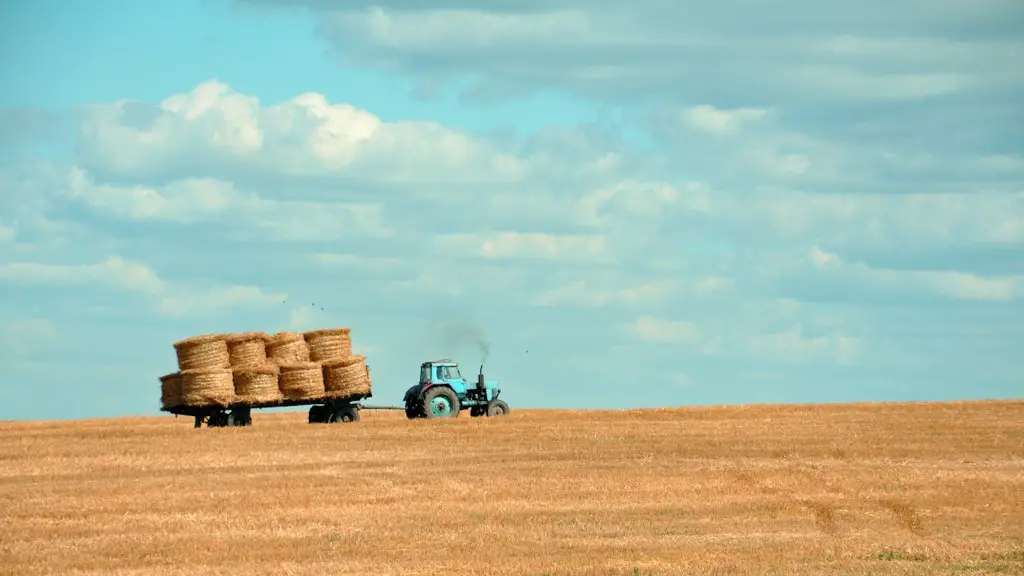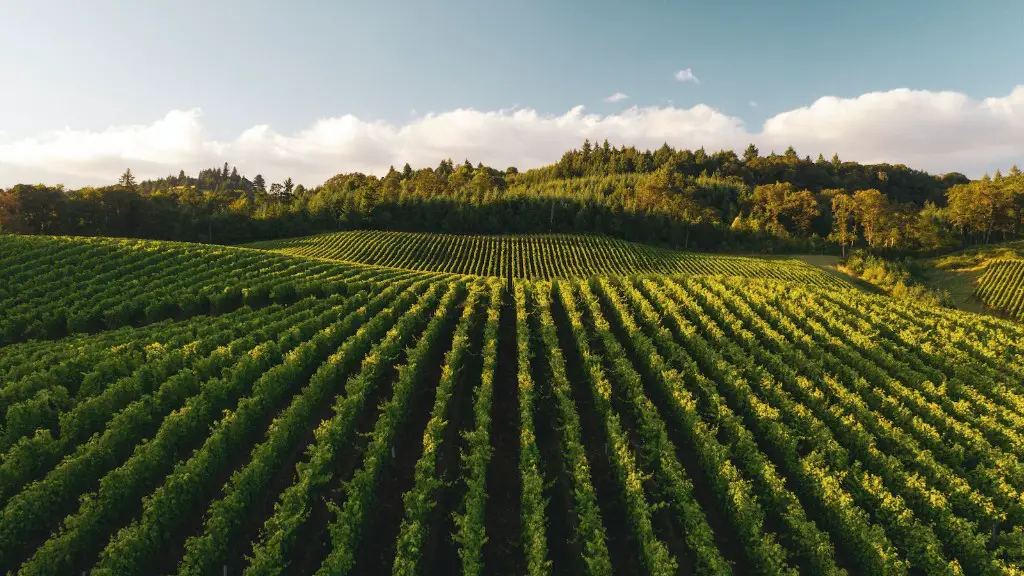Agriculture is often reliant on fertilizers to create the perfect conditions in which to grow a crop. Green manure, however, is considered one of the best alternatives to chemical fertilizers, and it represents a more sustainable approach to the land. Put simply, green manure is a crop of plants grown to be plowed back into the soil, which releases important nutrients like nitrogen and phosphorus. In order to understand why green manure is superior to conventional fertilizers, let’s take a look at how it works.
The process of using green manure to fertilize is simple yet brilliant. Once the crop has been planted, the plants are allowed to grow for a period of several months. During the growth period, the plants absorb nutrients, minerals and other organic compounds from the soil and trap them in their tissues. As the plants mature, they begin to decay, forming a rich layer of organic matter on top of the soil. This organic layer gradually works its way down into the soil, where it absorbs and releases essential minerals as well as nitrogen and phosphorus. This increases the fertility of the soil, and the naturally occurring minerals and nutrients help to promote healthy growth and productivity.
The benefits of using green manure to fertilize are plentiful. Not only does it provide a rich and natural source of minerals, but it also helps to improve the soil structure, inhibiting erosion and improving water absorption. This reduces the amount of water wasted and increases the yield of crops. Furthermore, green manure is less expensive to produce than traditional chemical fertilizers and it significantly decreases the amount of carbon dioxide released into the atmosphere.
In order to realize the full benefits of green manure, it is important to understand that it requires careful management. Over time, the amount of decaying organic matter builds up in the soil, eventually becoming so thick that it impedes the growth of the crop. If this happens, the soil needs to be replenished with fresh green manure in order to restore its fertility. Similarly, it is important to ensure that the soil is not overly saturated with green manure, as this can cause an imbalance in the nutrients available to the plant.
Green manure is an excellent alternative to conventional fertilizers and can be a highly effective way to restore the fertility of agricultural soil. It is a renewable, cost-effective method of enriching the soil, and when managed correctly, it can promote healthy growth and high yields. The long-term benefits of green manure are undeniable, and with careful management it can become an integral part of any farmer’s toolkit.
Nitrogen-fixing Plants as Green Manure
One way to use green manure to fertilize is to make use of nitrogen-fixing plants – these are plants whose roots are able to uptake atmospheric nitrogen and bind it to the soil. These nitrogen-fixing plants are particularly beneficial to areas of agricultural land that are low in nitrogen, as incorporating them into the soil helps to restore the fertility and increases the plant’s yield. Legumes such as alfalfa and clover are often used as a green manure, as they are both easy to grow and are extremely effective nitrogen-fixers.
The benefits of nitrogen-fixing plants as a green manure are numerous. Firstly, they are able to increase the levels of nitrogen in the soil, making it more fertile. Secondly, their root systems are deep, meaning that they are able to survive in dry conditions, while also helping the soil to absorb and retain more water. Furthermore, the deep roots in nitrogen-fixing plants help to improve the soil structure, which in turn leads to healthier plants and improved yields.
Nitrogen-fixing plants are an excellent way to use green manure to fertilize, but it is important to remember that they are not a ‘set it and forget it’ solution. They must be carefully managed, as their deep roots can exhaust the soil’s nutrients over time leading to poor yields. Additionally, the amount of nitrogen in the soil should be monitored, as too much can lead to stunted growth. With the right management, however, nitrogen-fixing plants can be an incredibly effective tool for improving agricultural land.
Mulching with Organic Material
In addition to using nitrogen-fixing plants, another way to use green manure to fertilize is through mulching. Mulching involves adding organic material to the soil, such as compost, straw, grass clippings, or leaves. The organic material acts as a protective barrier, helping to retain moisture in the soil, keep temperatures more even, and reduce the amount of weeds. Additionally, the organic material helps to enrich the soil with minerals, vitamins and other nutrients, ultimately improving the fertility.
Mulching with organic material is relatively easy and straightforward. All that is required is to spread a layer of the organic material around the base of the plants, taking care not to mound it too thickly. The layer of organic material should be about two to three inches thick and should be kept moist to ensure that the decomposition of the material is kept at an optimal rate. Mulching should be done regularly in order to maintain the fertility and health of the soil.
Mulching with organic material is a great way to use green manure to fertilize. Not only does it help to improve the fertility of the soil, but it also helps to keep temperatures more consistent and it reduces the amount of weeds. Furthermore, it is easy and inexpensive to do, making it a great addition to any farmer’s toolkit. With the right approach, mulching can be an effective way to promote healthy growth and increased yields.
Crop Rotation
Another way to use green manure to fertilize is through crop rotation. Crop rotation is the practice of alternating the crops that are grown on a given piece of land in order to avoid over-taxing the soil. This helps to maintain the soil’s fertility as different crops require different nutrients, allowing them to be replenished when the soil is left fallow. Additionally, rotating crops helps prevent disease and pests from building up, meaning that fewer chemicals are needed in order to maintain a healthy crop.
To ensure crop rotation works effectively, it is important to plan ahead. Crop rotation should be planned at least two years in advance in order to ensure that all the necessary nutrients are being replenished. Typically, this involves alternating between two groups of crops: those which replace a large amount of nitrogen in the soil, such as peas and beans; and those which restore the amount of phosphorus and potassium in the soil, such as grains and cereals. By alternating these two groups, the soil’s fertility can be maintained.
Crop rotation is an effective way to use green manure to fertilize, as it helps to replenish essential nutrients in the soil and keeps pests and diseases from setting in. When done correctly, it can lead to increased yields and healthier crops. Furthermore, it is a cost-effective method of fertilizer, making it an ideal tool for any farmer.
Cover Crops
Finally, cover crops are another method of using green manure to fertilize. Cover crops are plants which are planted and left to grow, usually over the winter months when the main crop is not in season. These crops are typically annuals, meaning they will die off in a single season and add nutrients back into the soil as they decompose. Common cover crops include barley, rye, clover and vetch, all of which add important minerals and nutrients back into the soil.
Using cover crops as green manure has many benefits. Firstly, it increases the amount of organic material in the soil, which improves soil structure and fertility. Secondly, it reduces erosion and increases water absorption, which helps minimize water wastage. Finally, it helps to control weeds, as the cover crops out-compete them for resources and prevent them from setting in. As a result, fewer chemicals are needed to combat weeds, which in turn reduces the amount of carbon dioxide released into the atmosphere.
Cover crops are an effective way to use green manure to fertilize. Not only do they help to increase the fertility of the soil, but they also come with a range of additional benefits. However, it is important to remember that using cover crops as green manure is an ongoing process, as the nutrients they release will be used up soon after they are added to the soil. As such, cover crops need to be planted regularly in order to maximize their benefits.
Summary
In conclusion, green manure is an excellent alternative to conventional chemical fertilizers and it is an effective way to increase the fertility of agricultural land. Different methods of incorporating green manure can be used, including nitrogen-fixing plants, mulching with organic material, crop rotation and cover crops. All of these methods come with their own benefits, and when used correctly, they can lead to healthier crops and higher yields. With careful management and the right approach, green manure can become an integral part of any farmer’s toolkit.




